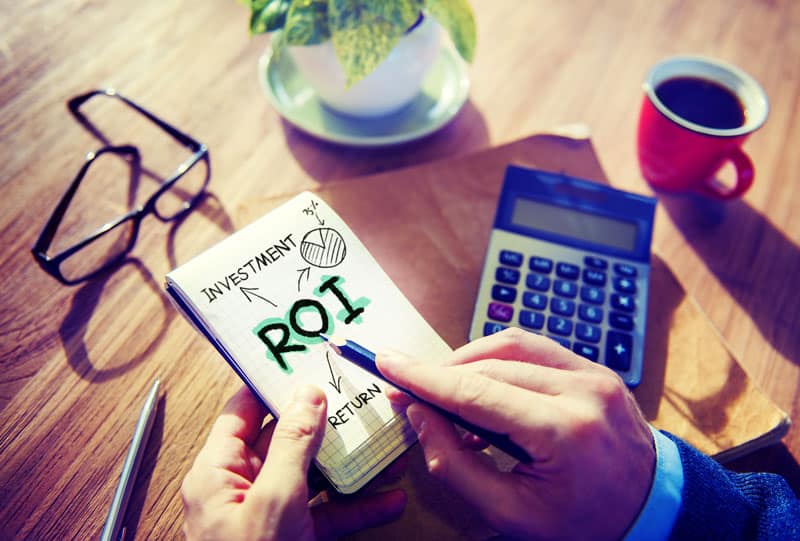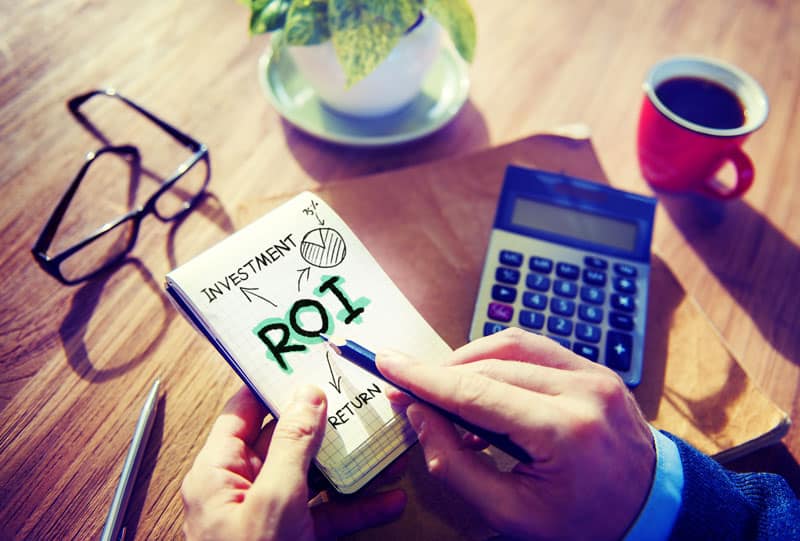
Buy to Let was once considered to be the prince of investments. The regular income from rent that offered high returns on investment plus the lure of capital gains was an investors’ dream. But the market has changed from the glory days of the late 90’s, early 2000’s and with a less buoyant property market, the returns are not what they once were.
In the UK there is an irrational approach to property investment, where risks, hidden costs and tax implications are often ignored and overlooked by people who feel that property is a ‘safe bet’. And, despite all the evidence to the contrary, property investment is seen as a better bet than stocks and shares or pension investment.
Where are we going wrong
If you’re working out your potential return, the simple annual rental figure and capital gains estimate doesn’t show the whole picture and many investors fail to factor in the full costs and tax liabilities. Many are now discovering that what once seemed like the answer to their investment prayers, is not quite what it seems.
When looking at any investment, you need to understand the true costs involved, for Buy to Let there’s a mixture of Entry, Ongoing and Exit costs. We take an in-depth look at the costs and potential risks and examine the alternatives…
Entrance fees, exit fees, ongoing maintenance, management, rental void periods, capital gains tax… have you factored these into your calculations?
Property Investment: Entry costs
Stamp Duty + 3% & Solicitors fees, searches, survey
Buying a house can be expensive. There are solicitors fees, charges for surveys and searches that can be considerable, but by far and above the biggest cost of buying these days is Stamp Duty. Changes brought in after 1st April 2016 have dramatically increased the cost of Stamp Duty for investors and second home owners, adding a flat rate 3% on top of the standard Stamp Duty Charges. Stamp Duty on a £250,000 house will now cost you £10,000 rather than £2,500 under the previous rules. To work out how much you’ll pay, there’s a handy calculator on the government website.
Mortgage arrangement fees
Whilst it’s true that mortgage rates are at an all-time low, Buy to Let mortgages come with a different set of criteria attached. You’ll need at least a 25% deposit and the mortgage companies typically want rent to cover 125% of the mortgage repayments, plus the best deals come with hefty mortgage arrangement fees – so, as with any loan, be sure to compare like-for-like and don’t just look at the headline interest rate.
If you are equity heavy or your property will be owned outright then you can minimise mortgage costs or eliminate them completely.
Tenant Finding Fees
The cost of finding good tenants can be expensive for landlords – it can be anything up to 1-month’s rent, but it’s worth finding a good letting agent to do this and run all of the required credit and background checks to ensure you get reliable tenants. It’s also worth factoring in paying for a full inventory report with photos (fully signed)- if you ever need to claim for damage/loss against a tenant you’ll need to rely on this.
Property Investment: Ongoing costs
Potential Management charges
Property management can be a full-time job and you’ll need to have a good network of qualified tradesmen on hand for any repairs that might come up. Even if you are pretty handy with DIY, any gas repairs need to be carried out by a registered ‘gas-safe’ tradesman and electrical works are also required to be carried out by a qualified technician. If needy tenants aren’t your thing then you’ll need to factor in property management charges – expect to pay between 10-15% of the rent in fees.
Insurance
The cost of insurance for landlords can add up too. You’ll need buildings insurance as a minimum and you’ll probably want to consider contents insurance as well, especially if your property is furnished. Some policies will also cover you for the cost of temporarily rehousing a tenant in the case of a fire or flood.
You may also want to consider things like emergency boiler cover, which can be a god send if the boiler breaks on Christmas Eve and there’s also rental protection to consider, which can cover you in the case, non-paying tenants.
Running costs
The cost of ongoing maintenance shouldn’t be underestimated, especially if you have purchased an older property. Tenants are not required to pay for what is deemed ‘fair wear and tear’ so over time expect to have to pay out for various things. Over 10 years I had to pay out for a new roof, a replacement boiler, new carpets, washing machine, oven, shower door and 4 fence panels.
You’ll need to make sure you have an emergency fund set aside to cover these types of repairs or you could end up with your tenants giving notice and even more costs on your hand (more on this later).
Be sure to keep your receipts as most of these costs will be tax-deductible expenses.
Tax
There have been changes to the tax rules surrounding Buy-to-let and the generous buy-to-let mortgage interest relief will be phased out from April 2017 and replaced with a 20 per cent tax credit. Whilst this won’t affect basic-rate taxpayers, it will impact significantly on higher rate earners.
Nationwide Building Society published an estimate of how a typical landlord’s profits might be hit. Someone with a £150,000 buy-to-let mortgage on a property worth £200,000, with a monthly rent of £800, would currently have a net profit of around £2,160 a year. Under the new system, the net profit would plunge to £960.
It’s worth having a good accountant on hand to make sure you’re paying the right amount.
Property Investment: Exit costs
This is another considerable cost which many Buy to Let landlords overlook. The cost of selling can soon mount up. Make sure you consider the full cost of selling your property – and if you’re thinking of selling the house yourself to reduce the estate agents fees, be sure to investigate this fully, the average selling time through online companies is as much as 3-times longer than traditional estate agents – this is time that the property may be empty without rent coming in to pay the mortgage.
Consider these exit costs:
- Estate agent selling fees
- Solicitor’s fees
- The potential cost of getting the property into a saleable state.
- Plus there will be capital gains to pay on any profit.
The property market can also affect your final sale amount and post-Brexit, we’re moving into uncertain times. Remember if you need to sell quickly to access your cash, you may have to reduce your selling price for a quick sale. Plus there’s also the uncertainty of the chain, which can affect the amount of time it takes to sell.
The risks of property investment
As with any investment, there are risks involved with being a landlord that can hit your pocket hard and make a considerable dent in your investment. Before you decide to dive in to property investment, it’s worth considering the following:
Tenants
Tenants are a complete unknown and even the ones that pass credit checks with flying colours can cause you issues. Ask any landlord and they’ll tell you about the wonderful tenants that they had but they’ll probably have a few horror stories to throw in.
Have a strategy in place to carry out regular checks on the property and to make sure the property is being looked after as per the terms of the tenancy agreement and properly aired and heated (especially in the winter) one of the most common issues we’ve come across speaking to landlords is tenants drying laundry over radiators and causing damp problems.
Non-payment of rent is also a risk and it’s not uncommon to discover damage at the end of a tenancy agreement. Whilst the tenant’s deposit may give you some recourse, it’s worth considering insurance to cover yourself – don’t forget to factor this cost into your figures, or factor in a loss tolerance to your investment figures.
Time commitment
You’ll need to consider the time commitment of being a landlord. If you’re planning on this being a part-time job, then you should be fine but if you’re working full-time and thinking you can manage it alongside your day-job, you’ll need to make sure you’ve got a backup plan for the time you may need to spend at the property e.g. finding tradesmen to fix issues or meeting estate agents to get new tenants.
Factors affecting yield
When you’re working out potential rental yield, you should factor in Void Periods, which, if you’re in it for the long haul, will affect your income at some time or another. Once they’re out of contract, Tenants only need to give 1-month’s notice, which is not that long to find new tenants. Even if you act straight away, it’s unlikely to be a seamless transition.
You could end up with void periods of no tenants, at which point you’ll be liable for council tax on the property and any water/electricity used during that time. You’ll also have the added cost of finding new tenants and you may need to spend money getting the property back up to standard to get a good rent.
Liquidity Risk
What if you need the money? How quickly can you sell your house? How much of a loss could you take on a forced sale? what if nobody wants to buy it? These are all questions you need to consider if you’re going to invest in property. On top of that – factor in estate agent fees and solicitor’s costs.
Remember the old adage ‘don’t put all your eggs in one basket’, as with any investment it’s worth considering having an emergency fund that you can access fairly quickly should you need to.
Market Risk
As safe as houses? Residential property is a market and like all markets is cyclical and has ups and downs. A 2014 report by financial services group True Potential showed that whilst housing outperformed stocks and shares through volatile market times, over the last 30 years UK equities outstripped other asset classes including House prices, as long as you steadily reinvested dividends (Source: True Potential).
N.B. It’s also worth noting that the House Price index makes no allowance for home maintenance costs or other buying, selling and ongoing costs associated with property investment – which can be considerable.
Government Risk
In April 2016 Stamp Duty Increased for second home owners and Investors, so you’ll now pay a flat rate 3% on top of the standard rate of Stamp Duty. Investor tax relief on Buy-to-let is also being reduced from April 2017, plus HMRC is clamping down on capital gains from second homes and Buy-to-let properties. Capital Gains from property attracts a higher level of tax than other investments. Again, a good accountant is worth their weight in gold in these cases, make sure you get the right advice so you don’t end up with an unexpected tax bill.
Stamp Duty has already gone up for investors and investor tax relief on Buy-to-let has decreased, plus HMRC are clamping down on capital gains from second homes and Buy-to-let properties and Capital Gains from property attracts a higher level of tax than other investments. Again, a good accountant is worth their weight in gold in these cases, make sure you get the right advice so you don’t end up with an unexpected tax bill.
TIME TO TALK TO A FINANCIAL ADVISER?
Sometimes it’s just easier to have a chat. We offer a free, no-obligation call with one of our independent financial advisers, get in touch and arrange your free consultation todayCONTACT US
So what are the alternatives – is there an easier way to invest?
Investing might seem like a minefield but there are options available to you whether you’re investing for capital growth, a regular income or both.
Property Investment alternatives:
Direct Shares
You can buy shares in a single company, the price of which can go up and down to reflect the value of a company. Depending on the performance, or market perception, the value can go up and down. Many, but not all, pay dividends, which can be a useful source of income. N.B. Dividends are taxable.
Currently, you have a £5000 tax-free allowance for dividends although this is reducing to £2000 from 2018. Dividends over £5000 are taxed as below:
| Tax band | Tax rate on dividends over £5,000 |
|---|---|
| Basic rate | 7.5% |
| Higher rate | 32.5% |
| Additional rate | 38.1% |
Direct Share Investing, is it for me?
This is more for the serious investors as it would need to be self-managed and the chances are you’ll be more exposed to risk because your success is limited to the performance of the company/companies that you choose to invest in, and concentrated portfolios can come with increased risk.
Dividends are normally paid annually or bi-annually. Don’t forget to factor in that whilst Dividends can be very healthy and can rise over time, they can also be reduced or suspended.
Shares can be held in ISAs and Pension and therefore benefit from tax advantages, which is explained below.
Direct Shares – The Costs
The easiest and cheapest way to buy shares is online from what’s called a ‘share dealing platform’. Even if you know the exact share you want to buy, you’ll still have to set up a trading account and make sure there is enough money in it before you can buy the share.
One of the biggest things to take into consideration when buying (and selling) shares is how much it’ll cost you in charges. The main ones to look out for are:
- Account fee: Platforms may charge a monthly, quarterly or annual account fee, but in some cases, this is waived if you make a minimum number of trades, or your account is of a certain size.
- Inactivity fee: An inactivity fee may be charged unless you make a certain number of trades within a set period. However, these days most platforms don’t charge this as a bonus to lure you in.
- Buying/selling shares: You’ll pay a fee each time you buy or sell shares. You’ll often find discounts for frequent traders.
- Stamp duty: When purchasing UK shares expect to pay 0.5% stamp duty and an extra £1 on transactions above £10,000.
Property Investment alternatives:
Investment Funds
With an investment fund, you can
- Have a regular income
- Make it tax efficient
- Have complete access to your money as and when required
- Have the potential to grow your money
Investment funds are pooled assets with multiple stocks/investments. The fund is made up of a collection of shares, normally spread across different industries and/or countries. The effect is it can shelter investors from exposure to a single stock – because you may have anywhere between 50-100 holdings in one fund.There are different types of Investment Funds such as an open-ended investment company (OEIC), unit trusts, investment trusts and Tracker Funds/ETFs (exchange traded fund), however, the principle is the same. The fund itself is made up of shares typically from between 50 and 100 companies. The advantage as an investor is that you can use the collective buying power of a fund to reduce charges on a small starting portfolio. And by having lots of different holdings you are not reliant on the performance of a small number of companies.
You also get access to a professional fund manager to buy and sell individual stocks, rather than having to make these decisions on their own. You may have more experience in this area than you think, investment funds usually are the default type of investments in our Pensions (personal and company) and our investment ISAs.
When it comes to taking your money out, with an investment fund you are in control of the timing, there is no need to worry about exchanging or chains falling through, you can just go for it.
Investment funds are a vast area, there are thousands of funds that invest in lots of different areas. The funds can have different styles to investing and they also charge differently. On top of that, they will all have their individual performance and it is up to you to keep track of your portfolio.
Investing in Investment Funds – Costs
When investing in investment funds, most Platforms and Fund Supermarkets don’t charge upfront to invest in the majority of investment, (always, read the small print and check first), which means that you escape the high entry costs associated with property investment – there’s no Stamp Duty, or estate agents fees and no tenant finders fees to pay. Equally, there are usually no charges upon sale (although again read the small print), you could probably release money inside of a month if you needed it.
Since you don’t have high entry costs you can invest more of your money from day one. All your money goes in at once and you can forget the hassle of tenants, the ongoing maintenance, insurance costs or the work involved in being a landlord.
Expect to pay
- An annual management charge (AMC), this is how the fund provider covers their costs and make their profit, it averages around 0.75% per year in most actively managed funds (Which.co.uk Different types of investment February 2016). For things like EFTs/Tracker funds the costs are normally a lot lower because they are not being actively managed, they just track an Index. Some index funds now charging less than 0.1% in ongoing charges.
- A Platform fee: A ‘fund platform’ is an online service that administers your investments, which typically lets you review your whole portfolio at any time and may offer a range of interactive tools to help you explore your investment options (a fund supermarket is an example of a fund platform). The platform makes a charge for these services, typically between 0.25% and 0.45% a year.
Property Investment alternatives:
Exchange Traded Funds
Similar to investment funds, but whilst investment funds and trusts are actively managed products, run by a fund manager who hand picks stocks and has some direction over the performance of the fund, an Exchange Traded Fund (ETF) is a passive product. ETFs are vehicles that simply track an index such as the FTSE 100. As index-linked products, they can access almost every area of the market.
ETFs are far cheaper than funds or trusts, as there is no active manager to pay for. However, as they simply track an index, if the index falls spectacularly, so will your investment.
Tax Efficiency
Stocks and shares and investment funds offer tax-efficient savings that cannot be matched by property investment. Although it is possible to find investment funds that include property investment funds. There are a couple of ways you can invest tax-efficiently:
ISAs
ISAs are tax-free accounts for your savings or investments. The 2017/18 ISA tax allowance is £20,000, so as a couple you can invest up to £40,000 tax-free per year and this can be in a cash ISA, a stocks & shares ISA, an innovative finance ISA, a Help to Buy ISA, a Lifetime ISA or a mixture of all of them (with a little juggling). With an investment portfolio, you can allocate funds to ISAs every year from your investment. If ISA limits stay the same for another 10 years, that’s £400,000 you can shelter from most forms of income tax and Capital Gains Tax.
Pensions
Pensions are a tax-efficient way of saving and have added benefits for higher-rate and top-rate taxpayers. Currently, individuals can pay 100% salary up to £40,000 each year and you get an instant leg up because tax relief is credited to the money. So, as a lower rate tax payer, if you make a lump sum investment into your pension of £8,000 then you will actually invest £10,000 for higher rate taxpayers it’s, even more, cost effective. To get to the same £10,000 could effectively cost a 40%-rate taxpayer, £6,000 and a 45%-rate taxpayer as little as £5,500
As a lower rate tax payer, if you make a lump sum investment into your pension of £8,000 then you will actually invest £10,000 (20% tax relief). For higher rate taxpayers it’s, even more, cost effective e.g. the same £10,000 could effectively cost a 40%-rate taxpayer only £6,000 as they receive 40% tax relief and the same £10,000 investment will cost a top-rate tax payer as little as £5,500 with their 45% tax relief.
While the money is in the pension it grows tax efficiency, just like an ISA.
Thanks to the new pension flexibilities you can now take all of your money from your pension, from the age of 55. If you need access before then this will limit the attractiveness of this option. There is an additional tax advantage because 25% can be released tax-free, any further funds can be withdrawn at your marginal rate of tax. So if you are a higher earner while you are saving for retirement, you could be able to take money from the pension at a lower rate of tax.
Making the right decision for your money
If this is daunting it can really pay to enlist the expertise of a professional financial adviser to help you find the best approach moving forward, you will then be able to delegate to them to help you keep track on the money on an ongoing basis.





